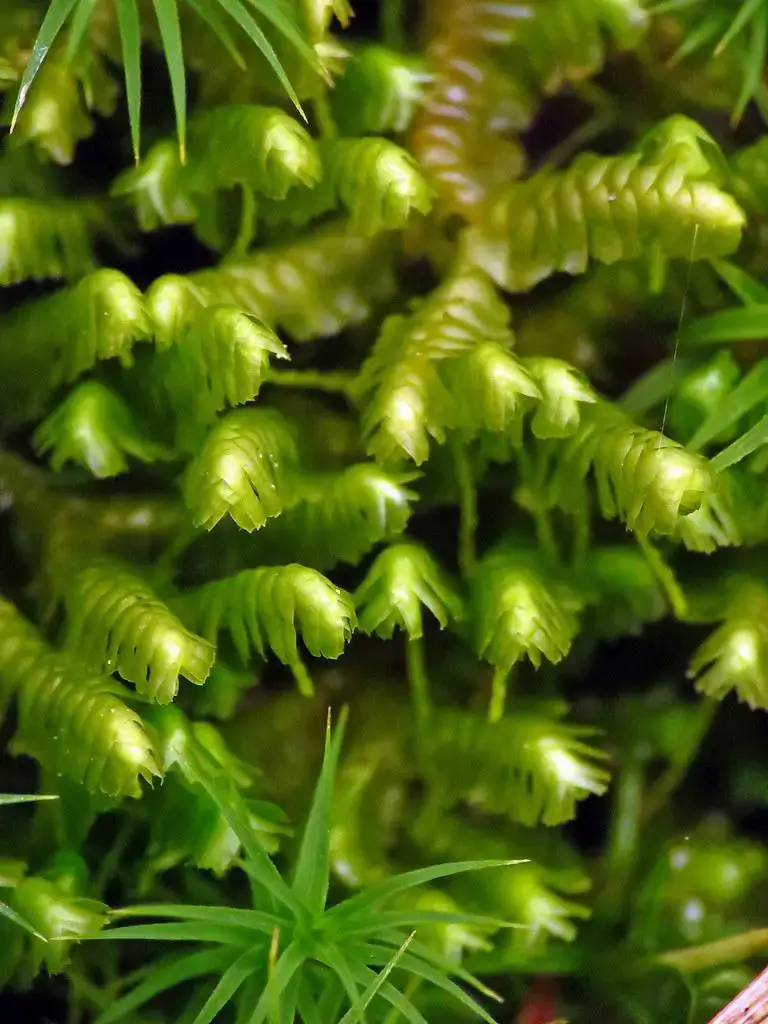
50497724938_fda5245e2f_b.jpg from: https://www.flickr.com/photos/blueridgekitties/50497724938/
Exploring the Fascinating World of Bazzania Moss
Introduction
Mosses are some of the most ancient and resilient plants on Earth. One particularly interesting species is
wCo6pxguzjetSG120q1OO0BE4qgHNNDT3LhT_3i-O73WC3lsUFURxpunCgx0u62A7C6glmV0pjsTiLuvonSa0A=s600 from: https://www.projectnoah.org/spottings/1011546009
Bazzania trilobata var. aquatica Loitl. ex Schiffn.

50776046882_f1292b1c24_b.jpg from: https://www.flickr.com/photos/12639178@N07/50776046882/
, commonly known as Bazzania moss. This small but mighty moss belongs to the Lepidoziaceae family and has some remarkable characteristics. Let’s dive in and learn more about this fascinating plant!
Background on Bazzania Moss
Bazzania trilobata var. aquatica is a type of leafy liverwort, which are non-vascular plants in the division

Bazzania_trilobata_020.JPG from: https://cisfbr.org.uk/Bryo/Cornish_Bryophytes_Bazzania_trilobata.html
Marchantiophyta. Liverworts are some of the earliest land plants to evolve over 400 million years ago. There are over 9,000 known species of liverworts worldwide.
Bazzania moss gets its species name “trilobata” from its distinctively three-lobed leaves. The variety name “aquatica” refers to its preference for very wet habitats. It belongs to the order

13044620333_b01d99d8dd_b.jpg from: https://www.flickr.com/photos/dryoptera/13044620333/
Jungermanniales, also known as the leafy liverworts.
Morphology and Identification
Bazzania moss forms dense mats with a unique branching pattern. The stems grow prostrate along the substrate and have frequent lateral branches that are nearly perpendicular to the main stem. This gives the moss a very “organized” and geometric appearance.

2021-09-15-11-39-27.jpg from: https://www.britishbryologicalsociety.org.uk/learning/species-finder/bazzania-trilobata/

480321952_242bdcee41.jpg from: https://www.flickr.com/photos/icbryson/480321952
The leaves of Bazzania are its most distinctive feature. They are incubous (overlapping like shingles) and divided into three distinct lobes. The underleaves are much smaller and appressed to the stem. Bazzania is fairly small, with shoots only 1-2 mm wide.
Global Distribution and Habitat
Bazzania trilobata var. aquatica has a widespread but patchy distribution across parts of Europe, Asia, and North America. It is found in very wet, often submerged habitats like:
- Streams and riverbanks
- Waterfalls and splash zones
- Seeps and springs
- Wet cliffs and boulders
This moss requires a constantly humid environment to thrive. It cannot tolerate any drying out.
Ecological Roles and Adaptations
As an aquatic moss, Bazzania plays important roles in stream ecosystems:
- Provides shelter and food for aquatic invertebrates
- Helps stabilize substrates and prevent erosion
- Filters and oxygenates water
- Serves as a bioindicator of good water quality
Bazzania has several adaptations for life in fast-flowing water:
- Strong rhizoids to anchor it to rocks
- Thick cell walls to withstand currents

bazzania-trilobata-microscopic-closeup-biology-macro-science-plant-botany.jpg from: https://www.pikist.com/free-photo-iufrb
- Ability to absorb nutrients directly from water
- Reproduction via fragmentation when bits break off and establish elsewhere
Conclusion
Bazzania trilobata var. aquatica

greater-whipwort-bazzania-trilobata-BFBT3H.jpg from: https://www.alamy.com/stock-photo-greater-whipwort-bazzania-trilobata-26690597.html
is a prime example of how even the tiniest organisms can have outsized ecological impacts. This unassuming moss works hard to keep our streams healthy and thriving.
The next time you’re hiking near a bubbling mountain brook, take a closer look – you just might spot a patch of Bazzania! Its presence is a good sign that the ecosystem is balanced and the water is clean.

51644819763_6138b35466_b.jpg from: https://www.flickr.com/photos/atrnkoczy/albums/72157720092013519
What other aquatic mosses and liverworts have you encountered in your explorations? Learning to recognize these small but significant species can deepen our appreciation for the complexity of nature all around us.